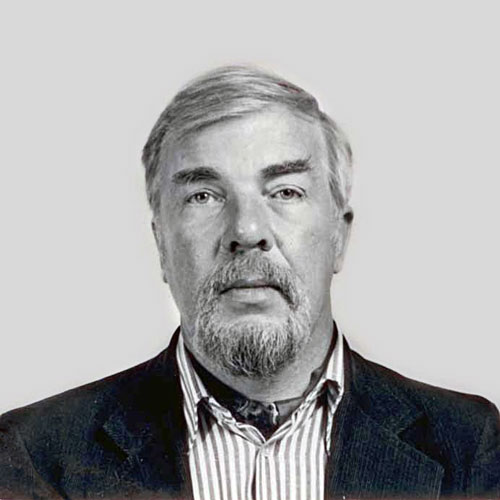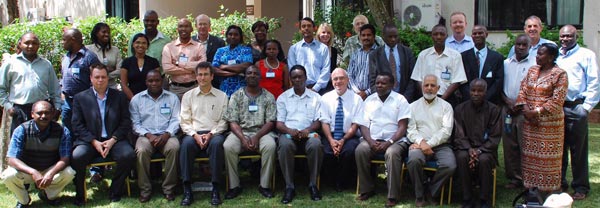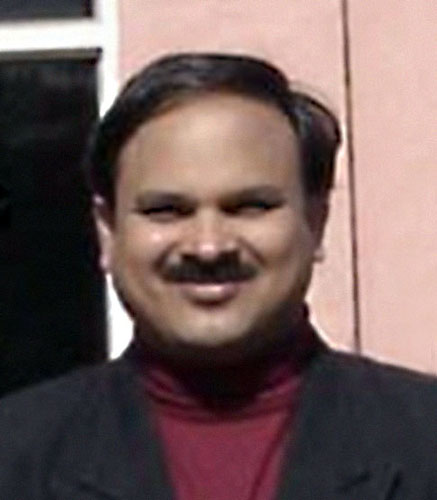The new Board of the Consortium of the CGIAR Centers visits Kenya
During 01-05 March 2010, several board members of the new Consortium of the CGIAR Centers traveled to Nairobi, Kenya, for their inaugural board meeting. Those in attendance included Carlos Perez del Castillo, Lynn Haight, Ganesan Balachander, Tom Arnold, and Mohamad Ait Kadi. After the main meeting on 01 March, members had the chance to visit and interact with several CGIAR partners and programs and to see first-hand how they are collaborating for positive change in Africa and other developing areas.
On 02 March, Carlos Perez del Castillo, chair of the Consortium Board of the CGIAR, thanked the Kenyan government for its interest in hosting the Consortium. The board is planning to relocate to a new home base, and Nairobi is one of five cities in consideration (the others being Addis Ababa, Montpellier, New Delhi, and Rome). That night also included a cocktail hosted by the World Agroforestry Center (ICRAF) and the International Livestock Research Institute (ILRI), during which del Castillo met with Mwangi Thuita and Romano Kiome, Kenya’s permanent secretaries of Foreign Affairs and Agriculture, respectively.
For the next three days, members traveled to various CGIAR facilities. On 03 March, del Castillo and Haight toured the ICRAF and then met with representatives from ICRAF and hosted institutions. Meanwhile, Balachander and Arnold toured the Kenya Agricultural Research Institute (KARI) Biotechnology Center in Nairobi. Then, on 05 March, del Castillo and Balachander visited KARI’s Kiboko center. There they saw some of CIMMYT and KARI’s collaborative maize research on drought, insect resistance, and low soil fertility. The team also visited the tropical legume trial sites that are jointly run by KARI and the International Crops Research Institute for the Semi-Arid Tropics (ICRISAT).
“What has impressed me most is the spirit of partnership that I have experienced – partnerships with farmers, national agricultural research systems, financial institutions, and CGIAR centers,” del Castillo said. “The new CGIAR will be about collective action, innovation, synergies, and impacts on the ground to tackle the problems of food insecurity, poverty, and climate change.”
At Kiboko, the consortium team interacted with the director of KARI, Ephraim Mukisira, and several CIMMYT members. Joint work on conventional and transgenic maize trials were highlighted during the visit. Other important conversations included private-public partnerships, impacts in sub-Saharan Africa, intellectual property, climate change, and information and seed dissemination.
“The facility development and research activities at this Kiboko center have been possible because of KARI’s partnerships and collaboration with the CGIAR, especially CIMMYT,” Mukisira said. “We have also benefited by jointly generating many maize varieties and developing our scientists’ capacity through CIMMYT’s training programs.”
Special thanks to our CIMMYT team members for making the visit a success: Wilfred Mwangi, Stephen Mugo, Yoseph Beyene, Dan Makumbi, Tadele Tefera, and Anne Wangalachi.
 Peter Walker, who worked at CIMMYT from 1975 to 1980, died at his home in Mexico City on 17 November 2009 after a short illness. He was 77.
Peter Walker, who worked at CIMMYT from 1975 to 1980, died at his home in Mexico City on 17 November 2009 after a short illness. He was 77.
 The CIMMYT community welcomes its new Global Maize Program Director, Boddupalli M. Prasanna, who will join us on 10 March and will be based in Nairobi, Kenya. A native of India, Prasanna holds a M.Sc. (1987) and Ph.D. (1991) in genetics from the
The CIMMYT community welcomes its new Global Maize Program Director, Boddupalli M. Prasanna, who will join us on 10 March and will be based in Nairobi, Kenya. A native of India, Prasanna holds a M.Sc. (1987) and Ph.D. (1991) in genetics from the